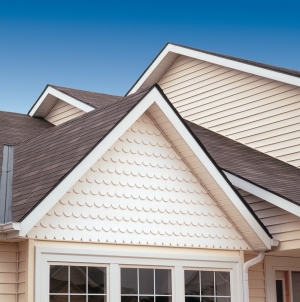Vinyl Vs. Fiber Cement Siding
Replacing the siding on your home is one of the most striking ways to give your exterior a facelift and make it more appealing to potential buyers. The most popular kind of siding is still vinyl but fiber cement siding is catching up quickly. In fact, according to a recent study, the market share for vinyl siding has dropped from 39 percent in 2003 to 27 percent in 2013 and fiber cement has picked up most of that lost market share.
Of course, the choice of siding material for your home will depend on many factors outside of the material you choose – style of home, character of the neighborhood, energy efficiency, and how long you plan to stay in the home – should all be considered as well.
With these shifts, we wanted to take a closer look at the strengths and weaknesses of each material and what you should look at when deciding which product is right for your home.
So what are the biggest differences between vinyl siding and fiber cement siding?
Cost – Vinyl siding is generally the most affordable type of siding and it is available in many styles and at many price points. Fiber cement siding is more expensive and often provides a richer looking finish. In Eastern Iowa, vinyl siding for an average two- story house generally costs between $8,000 and $16,000 while fiber cement siding ranges between $13,000 to $24,000.
Styles – Both of these materials come in a wide range of colors and decorative options. However, due to its composition, fiber cement can be molded to look like wood clapboard, shingles, stucco or masonry, so you have a larger variety of styles from which to choose.
Durability – Vinyl siding is generally not as durable as fiber cement. It’s subject to fading, cracking and moisture damage. The warranty length on vinyl siding varies based on the quality of the product. Fiber cement is more durable because it is termite-proof, fade resistant, fire-resistant, and does not rot. A 30-year warranty is common and often the siding itself lasts up to 50 years without needing replacement.
Maintenance – One of vinyl siding’s strengths is the easy care of the product. Often referred to as maintenance free siding, it is the very lowest maintenance option in siding and does not require regular painting. Fiber cement does require periodic painting, generally every 7-15 years. On the other hand, the ability to paint does give you the option of changing the color if you ever get tired of it.
Pulling the trigger on a siding replacement project can be a tough decision because it’s a big investment and there’s a lot to learn. Whether you decide to go with vinyl siding, fiber cement or another siding option, new siding will improve your curb appeal and increase the value of your home. Even though most siding replacement projects start out as a “pain” purchase, few home improvement projects will provide the satisfaction and pride in ownership as a newly sided house.
Make sure you’re prepared to ask the right questions when it’s time to replace your siding. Download our FREE Siding Installation Checklist and start planning like a pro.







